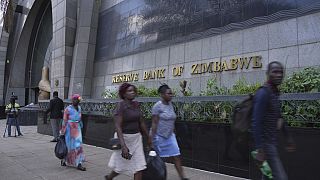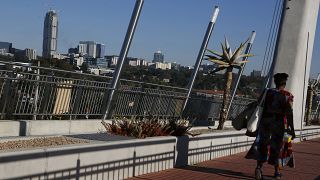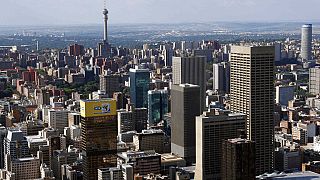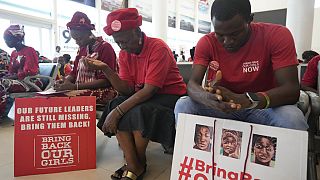Rail transport
African countries were on a drive to boost infrastructure and road networks on the continent in 2016.
Ethiopia made huge strides this year with the inauguration of a new railway line, linking the capital, Addis Ababa with Djibouti in October.
The 750 kilometer line was built at a cost of 4 billion US dollars with help from China.
The country wants to have 5,000 kilometers of new rail lines by 2020 to boost the economy by improving transport.
“It is a part of trans African railway network so it will give an opportunity for connecting Ethiopia with another neighbouring countries and it will minimize the cost of the transport and transport time,” said Ethiopian Railways Corporation, communication manager, Dereje Tefera.
Nigeria was also investing in infrastructure and launched a commuter train service linking the administrative capital, Abuja to major hub, Kaduna.
Nigeria once had a thriving rail system but it collapsed in the 80’s due to mismanagement.
President Muhammadu Buhari’s administration is now working on rail and power projects urgently needed to diversify an economy hit hard by a plunge in global oil prices.
“We are having a really nice ride, it’s so comfortable there is really no shock you know it’s really smooth. We are enjoying ourselves and the AC is good, we even have movie. It’s really nice,” said Bimpe Omotosho, a passenger on the train.
While in South Africa, minibus taxis, which are a common mode of transport in Africa were an under-tapped revenue source for South Africa’s struggling economy.
The taxis are crucial for nearly 19 million South Africans who use them to get around every day, and the industry’s estimated worth is over 40 billion rand.
Analysts said it could bring in much more if well regulated.
“Currently the minibus taxis are accounting for about 68.8 percent of land based transport, which means they are bigger than the buses and trains put together. The industry transports on a day and average of about 19 million passengers, so it is a very sustainable industry but also has a huge impact into the South African economy as well as the local communities,” said Bonisile Makubalo, director of corporate affairs at SA Taxi.
In Ghana, cab hailing service Uber made its entry as part of plans to expand across Africa. The company was also trying to convince traditional taxi drivers to work with them to avoid friction seen in other countries.
The company which uses smartphone and GPS technology to link customers with drivers is popular for its cheaper fares and convenience, which in turn has seen many drivers enroll on the platform which guarantees them clients.
“It’s easy, it’s accessible, and you don’t have to struggle to bargain with taxi drivers or drivers because it gives you the actual amount depending on the kilometers or the distance you cover and the drivers too they’re nice so far the one’s that I’ve come across are very cool their cars are neat and they treat you well like the way a customer deserves to be treated,” said Uber client, Naa Oyoe Quartey.
Across the continent in Kenya, Uber drivers held protests against fare cuts. Uber had dropped the price per km to 35 shillings from 60 shillings ($0.59). It also cut the waiting rate per minute to 3 shillings from 4 shillings previously to boost demand for the service, amid growing competition from local firms.
“The reason we are here it’s because we have been aggrieved and it’s about the issue of cutting fares and being a driver partner I was not consulted and that is one of the major reasons why we have decided to come out on the streets not because we don’t love Uber, it’s a good company it’s a good technology company and we like working with it,” said Simon Mutembei, one of the drivers.
Uber operates in several African countries, including Kenya where it launched in early 2015.













00:55
Kenya: 41 passengers rescued after floodwaters swept a bus off a bridge
02:52
Sierra Leone's capital introduces buses to ease transport crisis
Go to video
Bad weather in Kenya: resumption of rail freight in Mombasa
01:51
Nigeria: Passengers celebrate as Lagos metro rail project begins operations
02:04
Senegal revives train line for religious festival
01:18
Benin: Hundreds of trucks blocked at border with Niger following coup